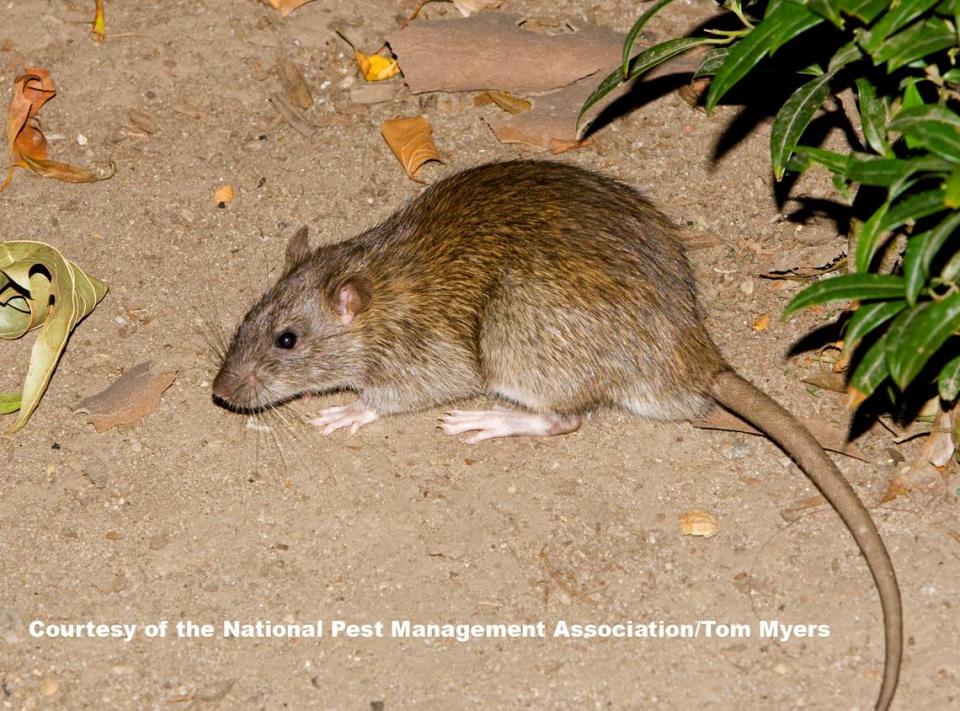Could disease-spreading rodents be entering your IL home this winter? What to look for
Although winter may not always be thought of as a particularly pest-filled season in southwestern Illinois, several disease-spreading species can thrive this time of year.
Belleville residents saw temperatures reach into the 60s this week, according to National Weather Service St. Louis office forecasts, allowing adult ticks, for example, to become active and look for hosts.
In addition to pests outside, when the temperature is lower, rodents tend to seek shelter and food sources in homes.
Here are some of the most common winter pests to keep an eye out for in southwestern Illinois this winter and how to avoid unintentionally housing them.
Winter pests in the metro-east
One of the primary groups of wintertime pests people should focus on is rodents, specifically house mice and Norway rats, Mike Bentley, board-certified entomologist and director of training and education at the National Pest Management Association, told the News-Democrat recently.
“This time of year what we see is as temperatures start to drop, rodents are going to start looking to move indoors in search of food and warmth,” Bentley said.

Rodents use a variety of environmental indicators, such as rainfall, daylight and temperature, to know when to seek indoor shelter.
As rodents’ typical food sources become scarcer in the winter, they become more likely to try to enter homes. In addition to wreaking structural damage to electrical wires, their feces, urine and saliva spreads a variety of diseases and parasites. Some mice species can serve as primary hosts to the black-legged tick, which carries Lyme disease.
Rodents directly spread many diseases, the U.S. Centers for Disease Control and Prevention reports, some of which include:
Hantavirus
Hantavirus pulmonary syndrome
Hemorrhagic fever with renal syndrome
Lassa fever
Leptospirosis
Mpox
Omsk hemorrhagic fever
Rat-bite fever
Salmonellosis
Ticks are another concern in the winter, as just one afternoon where temperatures warm past freezing can allow them to become active. Ticks are incredibly resistant to cold temperatures, Bentley said, and can easily find habitats in backyards.
Like rodents and ticks, fleas are also resourceful when it comes to winter survival. Fleas can be found wherever they have a host, Bentley said, such as pets, stray cats or squirrels or raccoons that find themselves holed up in your garage or attic.
How to keep the pests out your home in the winter
The most important thing people can do to try to prevent pest problems is to be proactive by eliminating potential entry points, Bentley said, though this may be more easily said than done.
Rats can squeeze through any gap as big as a quarter, Bentley continued, while mice only need an opening as wide as a No. 2 pencil. Ants and roaches can make their way through much smaller openings.
If you think it’s cold this January, imagine how the #pests feel! Ants, bed bugs, cockroaches, mosquitos, and termites have strategies to survive through the cold winter months. https://t.co/PbrrapyAA9
— PestWorld (@PestWorld) January 22, 2024
Here are more tips to prevent pest infestations, from Bentley:
Immediately clean up any food or drink spills, even if they are small.
Use tight-fitting lids in the kitchen and avoid leaving items unsealed.
Keep your garbage can far away from the door and garage of your home.
Familiarize yourself with common signs of pest activity, including rodent droppings and little nicks and cuts on food packaging.
Bentley recommends contacting a pest control professional at the first sign of rodent activity to limit not only potential damage to your home, but to avoid disease and parasite exposure.
